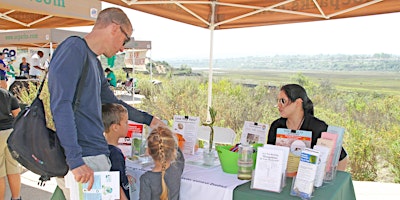
Sea Star
Marine animals take on many fascinating forms. Some are even mistaken for plants. One of the simplest and most primitive of animals is the sponge. This filter-feeding omnivore is really just a stationary colony of living cells attached to one another. The cnidarians (pronounced “nigh-dare-ee-ans”), another fascinating group of simple animals, use stinging cells called cnidocytes (nighdoe-sites) to obtain their food. These cells contain poisonous barbs which paralyze their prey. Sea anemones, jelly fish, and corals are cnidarians found in our local marine waters. Microscopic forms of the sea anemone live in the mud flats at Upper Newport Bay.
A more mobile group of animals is the echinoderms, which includes sea stars, brittle stars, sea urchins and sea cucumbers. Usually they have 5-part symmetry. In the sea star and brittle star this is immediately apparent. But this 5-part symmetry is also present in the sea cucumber; it is just that this creature lies on its side and has become elongated. A sea star has hundreds of tube feet on the underside of its arms. These are tipped with suction cups that are used to grip the shell of a clam or mussel. The sea star can then turn its stomach inside out and insert it into the bivalve and eat it from within.









